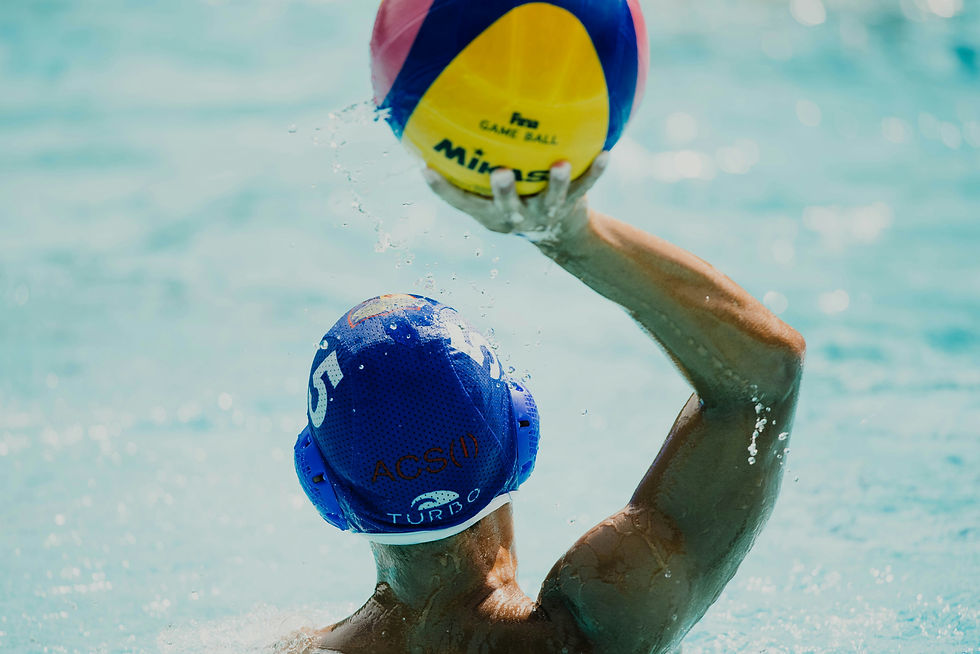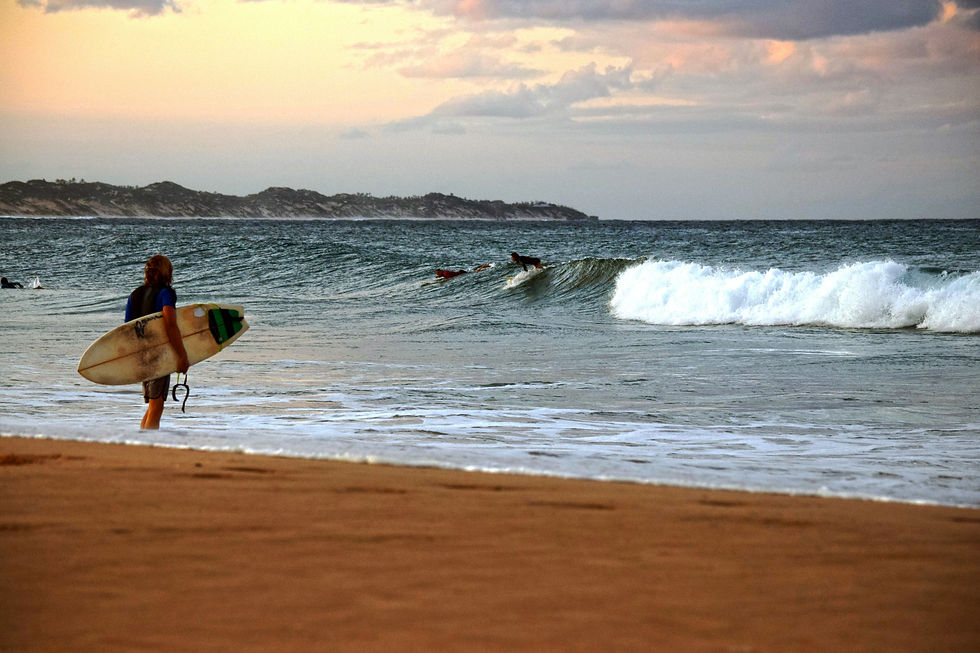Picture this: you’re gliding on a surfboard, feeling the rhythm of the waves beneath you. Or maybe you’re locked into a friendly padel or badminton match, your body reacting without overthinking. Fun, right? But here’s the best part—these flow-based activities might hold the key to calming and restoring your nervous system. Let’s dive into why!

What Are Flow Sports
Flow sports are activities that immerse you in the moment, requiring both physical and mental engagement. They often involve dynamic, unpredictable movement that keeps you fully present. Examples include surfing, paddleboarding, badminton, dancing, skateboarding, water polo, tennis, or even frisbee. These activities blend challenge with skill, creating the perfect conditions for entering a “flow state.”
Flow Activities vs. Repetitive Workouts
Okay, so structured exercise like running or weightlifting has its perks—it's great for building muscle, improving cardiovascular health, and releasing endorphins. But flow-based sports do something else entirely. They tap into something called the “flow state.”
Flow state is that sweet spot where challenge meets skill, and time just melts away. It’s not just good for your mood; it’s like a multivitamin for your nervous system.
Here’s Why Flow Wins
1. Stress Reduction Through Play
Let’s be honest—repetitive workouts can feel like a chore. But flow activities? They’re inherently playful. That playfulness releases oxytocin (the bonding hormone), reduces stress hormones like cortisol, and cranks up feel-good chemicals like dopamine and endorphins.
For your nervous system, this isn’t just a good time. It’s a signal to chill out and heal. Studies show that playful activities activate the parasympathetic nervous system (a.k.a. the “rest and digest” mode). (Porges, 2009)
2. Full-Brain Activation
In flow-based sports, your brain is firing on all cylinders. You’re tracking a shuttlecock, calculating your next move, and adjusting your body all at once. This stimulates neuroplasticity, the brain’s ability to form new neural connections.
Structured workouts? They’re great for strengthening specific pathways, but they don’t engage the whole brain the way dynamic, game-like activities do.
3. Balance and Body Awareness
Ever notice how flow activities require constant adjustment? Whether you’re balancing on a paddleboard or chasing a shuttlecock in badminton, your vestibular system (balance) and proprioception (body awareness) are on high alert.
This is gold for the nervous system because it strengthens the brain-body connection. Over time, this can improve coordination and reduce symptoms of nervous system disorders.

4. Nature’s Healing Touch
Many flow-based activities happen outdoors—surfing on the ocean, paddling down a river, or playing badminton in your back garden. Nature therapy is a thing! Being in green spaces reduces stress, lowers blood pressure, and boosts vagal tone (a key measure of nervous system health).
A study published in Frontiers in Psychology (2019) found that spending time in nature can significantly reduce symptoms of anxiety and depression. Add a flow activity into the mix? Double win!
And if your flow activity happens to involve water, even better—especially if it’s cold. Cold water immersion has been shown to have profound benefits for the nervous system. It activates the parasympathetic nervous system, improving vagal tone and promoting a state of calm. Additionally, exposure to cold water can help regulate the stress response by lowering cortisol levels and enhancing the release of endorphins, those feel-good chemicals that boost mood.
Regular cold water exposure, such as swimming in the ocean or even ending your shower with a blast of cold water, can help reduce nervous system reactivity over time and build resilience against stress.
So, whether you’re swimming in a tranquil lake or braving the waves in the ocean, nature—and cold water—offers a powerful way to heal and restore your nervous system.
5. Mindfulness in Motion
One of the coolest things about flow sports is how they demand your full attention. You can’t dwell on life’s worries or the mental clutter while you’re trying to catch a wave. This is mindfulness in motion, and it’s a game-changer for calming an overreactive nervous system.
Mindfulness has been shown to reduce symptoms of PTSD, anxiety, and even chronic pain (Kabat-Zinn, 2005). Flow sports are like sneaky mindfulness training—you don’t even realize you’re meditating!
6. Dynamic Movements vs. Repetition
Repetitive exercise is, well, repetitive. This predictability can be good for building endurance or strength, but it doesn’t challenge the nervous system to adapt.
Flow activities? They’re dynamic. Your body has to respond to unpredictable stimuli (a wave, an opponent’s shot), which keeps the nervous system flexible and engaged. Adaptability is key to nervous system health.

Reclaiming Movement: A New Approach to Recovery
As we’ve seen, flow sports engage both your body and mind, reducing stress, promoting mindfulness, and helping to rebalance your nervous system. For those recovering from nervous system challenges and ready to gradually reintroduce exercise, this combination can be transformative.
Imagine trading a gruelling gym session for a paddleboarding outing on a serene lake. You’re building strength, calming your nervous system, and enjoying the moment all at once. Unlike repetitive, rigid workouts—where it’s all about counting reps, steps, or crunches, often putting undue strain on your nervous system—flow activities are inherently engaging and rewarding. They keep your mind stimulated and your body moving in a way that feels natural and joyful.
Instead of viewing these activities as “just fun and games” or secondary to traditional workouts, it’s time to reframe them as the main event.
After all, if you’re struggling to incorporate exercise into your recovery or your body isn’t responding well to structured activities, finding movement that feels good and does good might be the answer you’ve been looking for.

Don’t Just Take My Word for It!
If you’re curious about the connection between flow activities and nervous system health, check out these fascinating reads:
Go with the Flow: A Neuroscientific View on Being Fully Engaged Read on PubMed This article dives into the neuroscience of flow states, exploring how they enhance brain function, reduce stress, and improve mental clarity.
The Psychophysiology of Flow and Your Vagus Nerve Read on Psychology Today A deep dive into how flow states stimulate the vagus nerve, improving parasympathetic activity and promoting nervous system balance.
How Flow State and the Nervous System Interact Read on US Pain Foundation This piece explores the interplay between flow states and nervous system health, with insights into how they reduce pain and enhance recovery.
For a deeper understanding of nervous system regulation and mindfulness, these resources are worth exploring:
Porges, S.W. (2009). The Polyvagal Theory: Neurophysiological Foundations of Emotions, Attachment, Communication, and Self-Regulation. This work introduces the Polyvagal Theory, explaining how the autonomic nervous system regulates emotional and social behaviour.
Kabat-Zinn, J. (2005). Coming to Our Senses: Healing Ourselves and the World Through Mindfulness. In this book, Jon Kabat-Zinn explores the transformative potential of mindfulness in personal and societal healing.
Frontiers in Psychology (2019). "Minimum Time Dose in Nature to Positively Impact the Mental Health of College-Aged Students. "This study examines the minimum time required in nature to reduce stress and improve mental health among college students.

Ready to Flow?
The next time you’re deciding between lifting weights or heading to the beach, consider this: What does your nervous system need today?
Maybe it’s time to swap that treadmill for a surfboard or grab a buddy for a badminton match.
Your nervous system will thank you—and you’ll probably have a lot more fun, too.
References
Go with the Flow: A Neuroscientific View on Being Fully Engaged Read on PubMed This article dives into the neuroscience of flow states, exploring how they enhance brain function, reduce stress, and improve mental clarity.
The Psychophysiology of Flow and Your Vagus Nerve Read on Psychology Today A deep dive into how flow states stimulate the vagus nerve, improving parasympathetic activity and promoting nervous system balance.
How Flow State and the Nervous System Interact Read on US Pain Foundation This piece explores the interplay between flow states and nervous system health, with insights into how they reduce pain and enhance recovery.
Porges, S.W. (2009). The Polyvagal Theory: Neurophysiological Foundations of Emotions, Attachment, Communication, and Self-Regulation. Read on PMC This work introduces the Polyvagal Theory, explaining how the autonomic nervous system regulates emotional and social behaviour.
Kabat-Zinn, J. (2005). Coming to Our Senses: Healing Ourselves and the World Through Mindfulness. Available on Amazon In this book, Jon Kabat-Zinn explores the transformative potential of mindfulness in personal and societal healing.
Frontiers in Psychology (2019). "Minimum Time Dose in Nature to Positively Impact the Mental Health of College-Aged Students. Read on Frontiers This study examines the minimum time required in nature to reduce stress and improve mental health among college students.




Comments